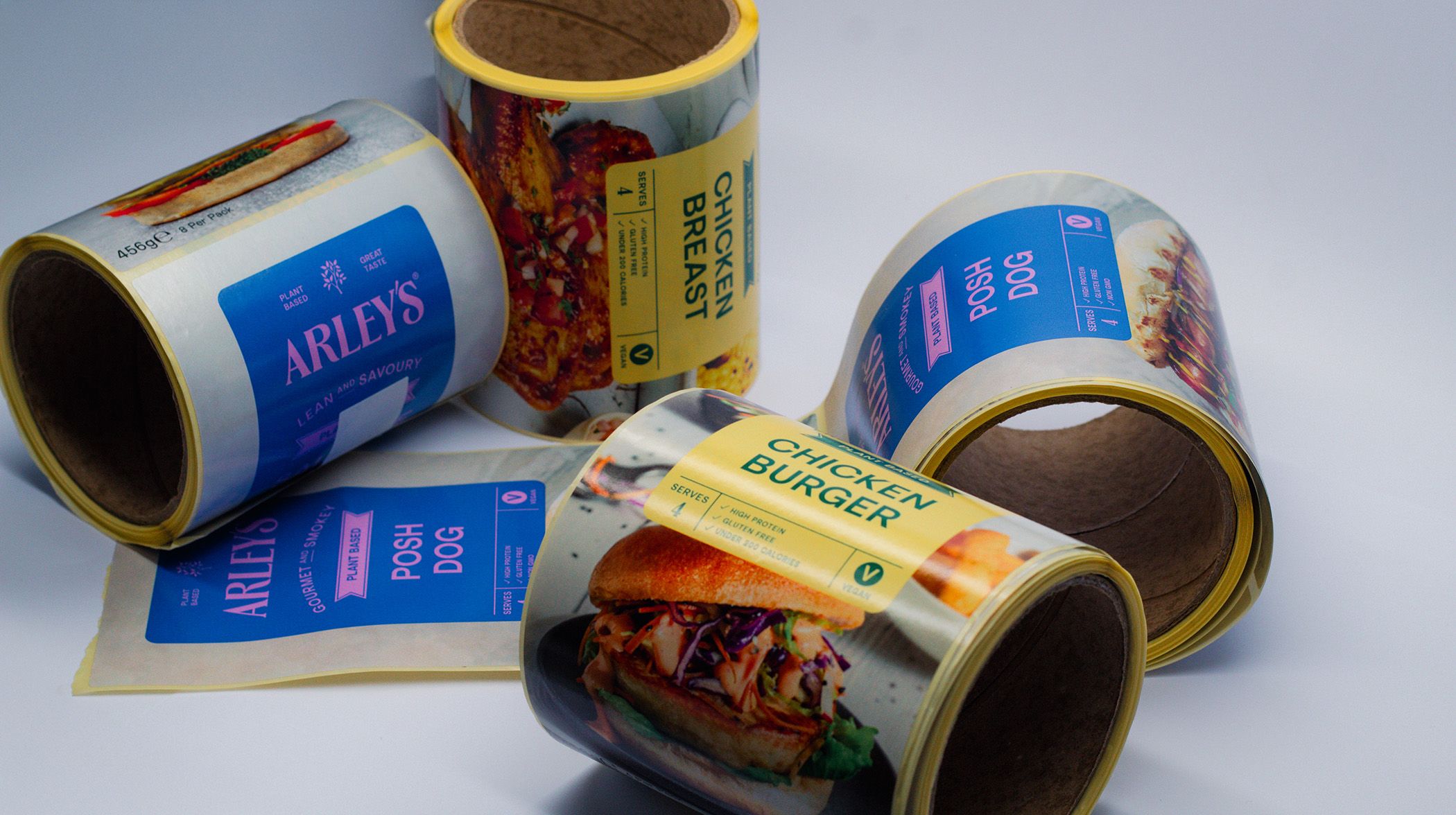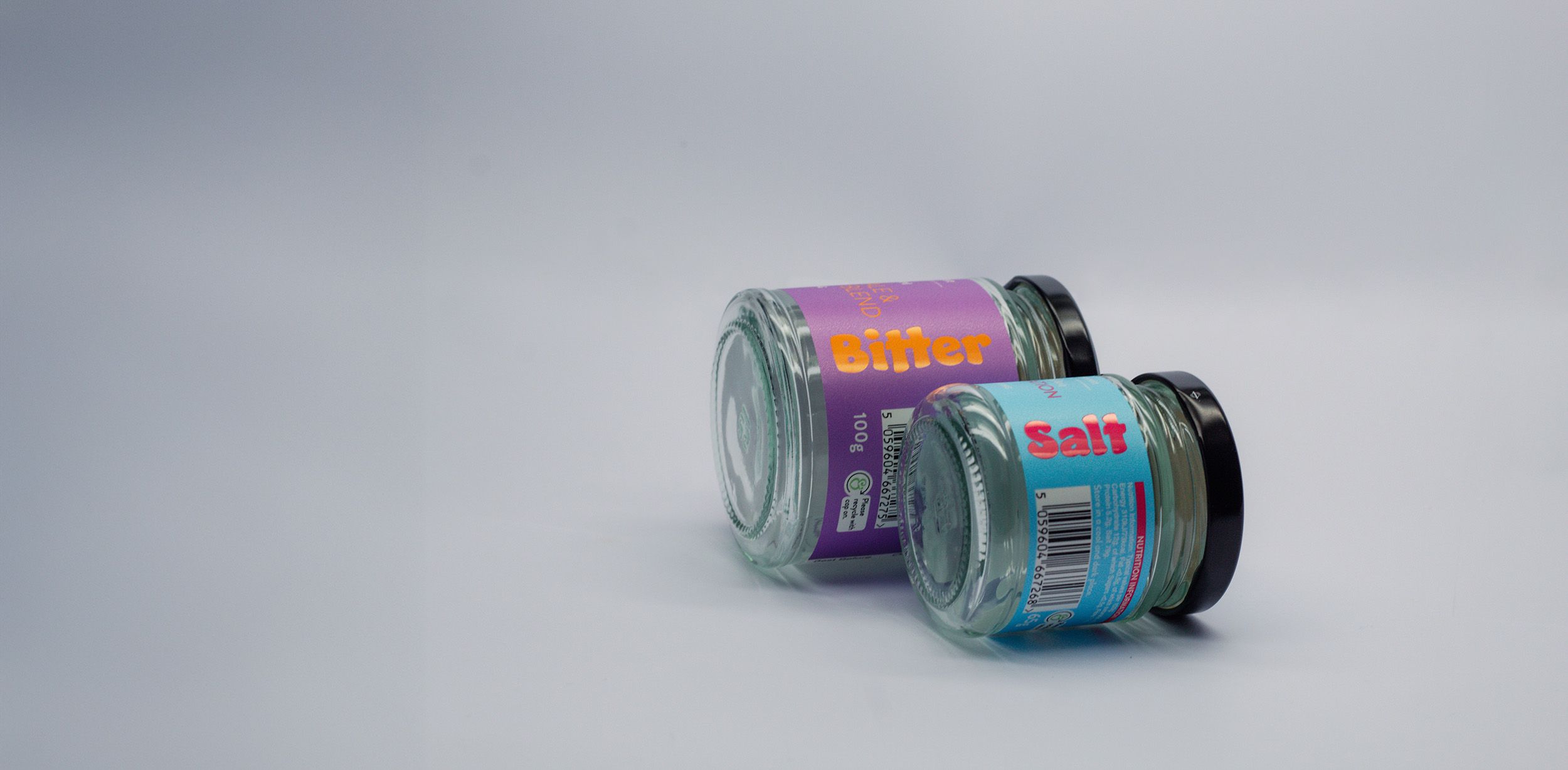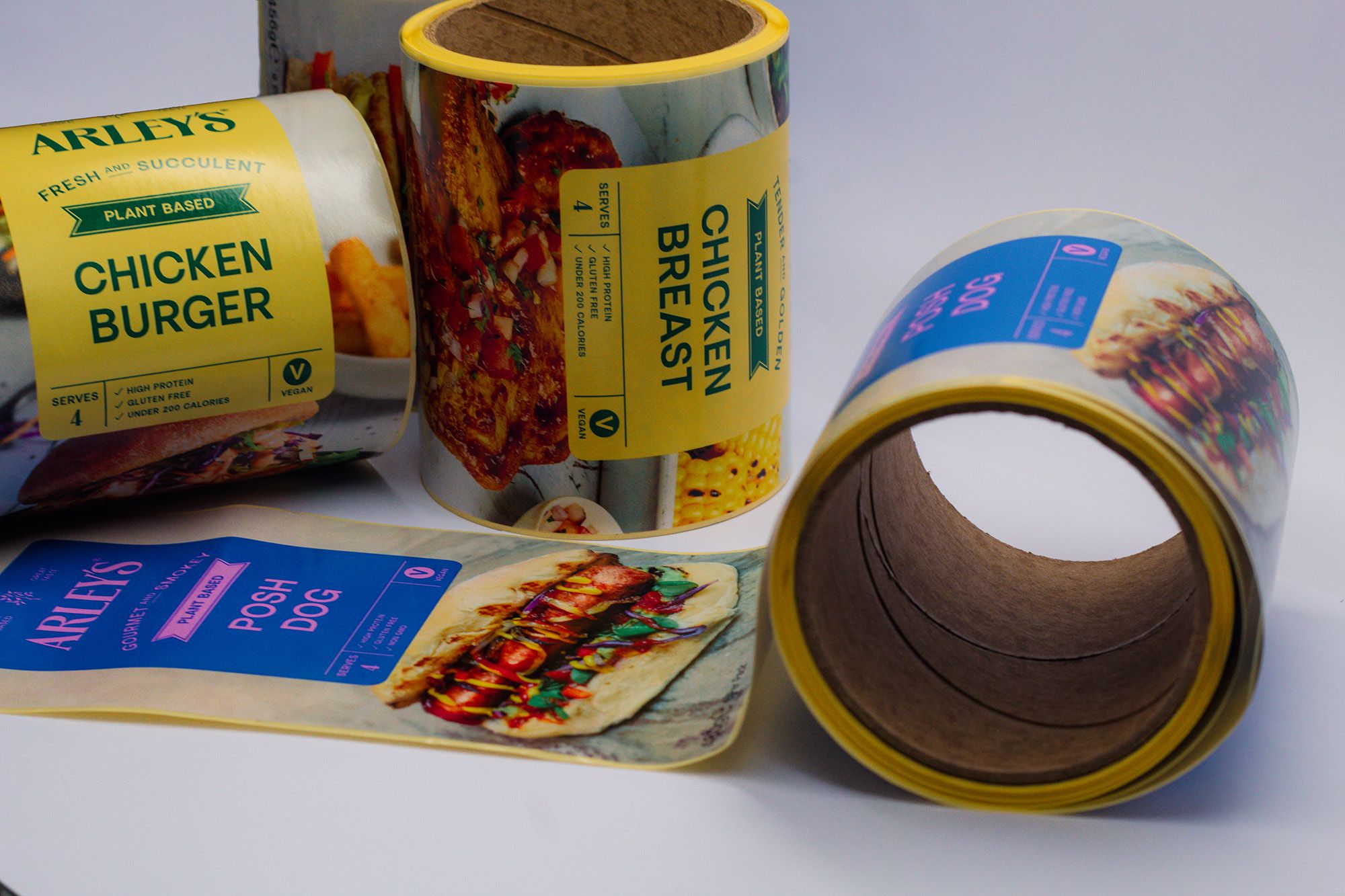
Practical Food Label Advice for Producers Big and Small
Designing a label for a food product, such as a tangy chutney, creamy cheese, or small-batch curry sauce, involves a lot more than just printing something that looks good on a shelf. It’s about striking a balance between creativity and accuracy, making sure the label works just as well for a one-person startup as it does for a nationwide brand. Perhaps you're hand-labelling jars in a farm shop or sending pallets to supermarkets, either way, a well-designed label builds trust, tells a story, and helps customers choose your product again and again. This blog will share guidance with producers on how to approach food label design and explore the best options available in the label industry.
What Makes a Great Food Label?
First and foremost, every food label in the UK must follow strict legal guidelines. That means including details such as the product name and a complete ingredients list with allergen information. It’s not the most exciting part of the label, but producers have to get it right. Of course, meeting guidelines is only the first step. The real power of a food label is rooted in its ability to tell your brand’s story and create instant shelf appeal.
Telling Your Story
Think about shelf impact. Your product needs to stand out among dozens of competitors, and your label is often your first (and only) chance to make a strong impression, whether it’s lined up in a farm shop or stocked in a major retailer. Your label should speak directly to your target market. If you’re selling to small-batch, artisanal buyers, a handcrafted, rustic design with warm, personable language fits well. On the other hand, bulk buyers or foodservice clients may prefer clean, professional labels that focus on clarity and reliability.
And don’t underestimate the power of storytelling. Including a brief section about where your ingredients are sourced and how they are grown, how your recipes came to be, or the ethos behind your brand can capture the attention of your desired customers. It’s these little touches that turn a good label into a memorable one and determine whether your product sits on the shelf or sells.
Crafting Perfect Designs with Quality Materials
Choosing the right materials helps reflect the style you're going for and sends a message to your target audience. For example, using textured paper for an organic jam is in keeping with the natural content of the product and elevates the look and feel of the packaging. Catchy design choices, such as bold and clear typography, custom label shapes, and colour schemes that reflect your brand's personality, all help products stand out in a crowded market.
Getting the Right Fit
There’s no one-size-fits-all answer when it comes to the size of your food label, but it must be large enough to display all required information clearly and legibly. That means sufficient space for ingredients, nutritional values, expiry dates, and other legal details, without needing a magnifying glass to read them. Options such as peel-and-reveal formats or double-sided printing are especially useful for smaller jars and bottles. For both small and large producers, making sure the label is both informative and visually appealing is key to success on the shelf.

What Information Should Food Labels Include?
Every food label sold in the UK must include specific information to meet legal requirements and provide transparency to consumers. Labels must be clear, legible, and permanently attached to the packaging. At a minimum, labels must feature the product name, a clear description, the net weight or volume, a complete list of ingredients in descending order by weight, and a clearly marked best-before or use-by date. Depending on the product, you may also be required to include the country of origin, especially if omitting it could mislead the buyer, as well as storage conditions and instructions for use.
Nutritional Information Panel
For most pre-packaged foods, the nutritional information panel is mandatory and must provide precise details about the product’s energy content (in both kilojoules and kilocalories), along with values for fat, saturates, carbohydrates, sugars, protein, and salt, per 100g or 100ml. While some exemptions exist for very small businesses or certain handcrafted items, it’s always a good idea to check whether your product qualifies.
Premium Materials & Printing for Every Food Labelling Need
At Vista Labels, we offer a versatile range of label materials and printing options to suit all businesses in the food industry. These are some of the most popular label types we produce for food products.
Standard Paper Labels
Our go-to choice for general-purpose food labelling, standard paper offers excellent print clarity and a professional finish. These labels are perfect for items like jars of jam, chutneys, or artisan sauces, where shelf appeal matters just as much as function.
Direct Thermal Labels
For businesses that need to overprint important details, such as barcodes, expiration dates, or batch numbers, direct thermal labels are the most suitable solution.
Blank Labels for On-Site Customisation
Would you prefer to print your own labels in-house? We offer high-quality blank labels that are compatible with most standard printers. These are ideal for small-batch producers or operations that require quick label changes on the fly.
Freezer-Specific Adhesives
Some food products need to go from production straight to the freezer. Our specialist adhesives are engineered to withstand cold and moisture without peeling or cracking. And because we know every production line is different, we’re happy to send free samples so you can test how our labels perform in your specific conditions before committing to a whole order.

Finishes & Adhesives Built for Food Packaging
The Vista Labels range of varnish finishes, including sleek gloss or softer matte textures, helps protect your labels from scuffing and moisture while also giving them a polished, professional look. For more susceptible food packaging like sandwich packs, salad boxes, or fresh pasta pots, we know how important it is for labels to stay firmly in place. That’s why we use a specially developed hot melt adhesive that’s tough enough to handle condensation, frequent handling, and tricky surfaces like chilled plastics, so your labels stay stuck, no matter what.
Raising the Bar with Globally Recognised Certification
Our PS 9000:2016 certification backs Vista Labels’ commitment to producing labels that meet the highest industry standards. This globally respected certification ensures that we focus on safety standards and quality management, risk assessment and hazard identification, as well as comprehensive supplier controls, all of which are directly transferable to the food labelling sector. By adhering to these high standards, our clients can have confidence that their labels are produced with the same precision and compliance demanded by some of the world's most regulated industries.
Trusted Food Label Solutions for Every Scale
At Vista Labels, we’re proud to support businesses of all sizes, whether you’re just starting out with your first batch of handmade chutney or managing large-scale food production for national distribution. We understand the challenges that small businesses face, and we’re here to offer guidance, flexibility, and expert support to help you grow. At the same time, our production capabilities and industry credentials mean we’re fully equipped to handle high-volume, time-sensitive orders.
We care about doing things the right way, professionally, sustainably, and ethically. That’s why we hold ISO 9001 accreditation and are proud members of Sedex. Regardless of whether you need a small batch print or several thousand labels, you can contact Vista Labels for dependable service, expert advice, and a shared passion for helping your food brand thrive.